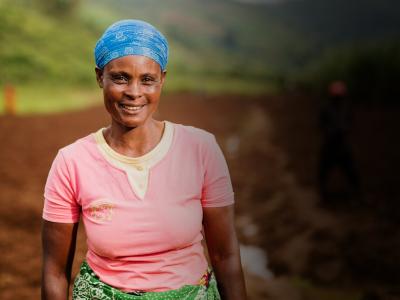World peace. It is most often discussed as a fuzzy, imaginative, utopian concept, or a beauty pageant cliché. Ask anyone working internationally, however, and you will quickly find that the presence or absence of peace is felt in a very real way by millions of people every day.
Conflict zones are terrifying and dangerous places to live. More now than any other time in history, civilians are being specifically targeted by armed combatants. According to UNICEF, civilians (including children) make up more than 90 percent of wartime fatalities (up from 65 percent during World War II). Civilians may be bombed, shot at, or taken prisoner. They may be tortured, raped, or trafficked. They may have their movement restricted, or be blocked from receiving any type of food or medical humanitarian assistance. War is a pervasive environment in which trauma, infectious disease, mental illness, and poor nutrition can influence maternal physiology enough to cause ripple effects across generations.
At Women for Women International (WfWI), we are well aware of how difficult it can be to live or work in conflict-affected regions. In northern Iraq, Afghanistan, and South Sudan especially, ongoing insecurity frequently complicates our efforts to provide life skills and vocational training to marginalized women. As we do not want to endanger our program staff or the women we serve, the importance of having a peaceful and safe environment in which to work cannot be overstated. We also know that the leadership and equal participation of women in these societies is one key to creating this peaceful space.
Since 2002, Women for Women International-Afghanistan has served more than 51,000 women through our yearlong program. Photo credit: Women for Women International, 2014
In 2014, WfWI received a grant from Dutch development organization Cordaid to train 20 women in South Sudan in peacebuilding, conflict resolution, leadership, and advocacy, so they could become community organizers and mobilizers for peace. After the training, all participants developed action plans for promoting peace in their respective communities and held discussions with local leaders to elicit their support of peacebuilding outreach efforts. Peacebuilding awareness forums were then held in more than 15 villages, leading to improved community cohesion, mobilization, and support, and better perceptions of women among community members and leadership. Other women volunteered to join the original 20 peacebuilders, becoming active participants in the ongoing peace movement.
Unfortunately, conflict in South Sudan has continued to escalate. Community outreach activities have been limited or suspended altogether, as it has become dangerous to gather in large groups. Gender-based violence – including gang rape – is being regularly perpetrated by state and rebel soldiers against civilians with impunity. And on the occasions when peace talks are convened, women are mostly being left out of the negotiations.
Eleanor Roosevelt once said: “It isn’t enough to talk about peace. One must believe in it. And it isn’t enough to believe in it. One must work at it.” Today, on the International Day of Peace, I hope we can all commit to putting in the effort to build peace wherever we are, however we can, in big ways and small. Because as long as we imagine world peace to be merely an idealistic concept too abstract to pursue, millions will be forced to continue suffering the realities of war.
This blog was originally posted by WfWI President Laurie Adams on the Huffington Post on September 21, 2016.

